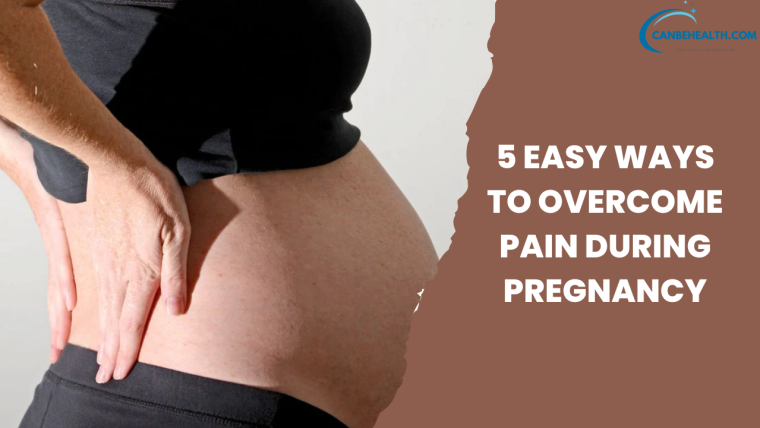
What is Abdominal Migraine?
Abdominal migraine is not a one-sided headache as it is commonly known. As the name implies, abdominal migraine or abdominal migraine is a condition of pain in the abdomen . However, these problems often occur as a reaction to the same triggers as migraine headaches. When it occurs, this disorder can cause severe pain that can cause nausea, cramps, and vomiting.
Abdominal migraine is the most common cause of chronic and recurrent abdominal pain in children aged five to nine years, but it can also occur in adults. This stomach disorder is more common in girls than boys.
This disorder is recognized as an episodic syndrome that may be associated with migraine which can be caused by heredity. That way, children who often experience this disorder can grow into adults with a high risk of migraines. If your child often experiences this disorder, it’s a good idea to immediately get a doctor’s examination.
Symptoms of Abdominal Migraine
Symptoms of an abdominal migraine often occur suddenly and are severe, without any prior signs. This disease can cause pain in the middle of the body or around the navel, which is called midline abdominal pain.
Abdominal migraines are repeated episodes of moderate to severe abdominal pain lasting from 1 to 72 hours. People with this disease will usually experience the following symptoms:
- Pain in the middle of the abdomen or around the navel.
- Pain can be moderate to severe.
- Usually the pain is diffuse or cannot be pinpointed with certainty.
- The pain may recur in weeks or months, and there is usually a characteristic pattern of symptoms in the sufferer.
- Feeling nauseous or vomiting.
- A pale or flushed face.
- Weak and powerless.
- Loss of appetite.
- Has dark shadows under the eyes.
- There are black bags under the eyes.
Causes of Abdominal Migraine
The exact cause of abdominal migraine is not yet known. The possibility of this problem occurs has something to do with chemicals in the body, namely histamine and serotonin. In addition, feeling upset or worried is also believed to increase a person’s risk of experiencing this disorder because there is a connection between the gut and the brain.
Some types of food, such as chocolate, foods containing monosodium glutamate (MSG), citrus, caffeine, cheese, carbonated drinks, containing coloring and flavoring substances, and meat processed with nitrite, can trigger abdominal migraines in some people.
Other triggers that can cause abdominal migraines include very bright light, poor sleep quality, traveling, fasting for a long time, and stressors at school and family. Swallowing a lot of air can also trigger this abdominal pain due to bloating and difficulty eating.
Abdominal Migraine Risk Factors
- Abdominal migraine is usually familial or hereditary. So, children who experience this disease usually have family members who have a history of similar complaints.
- The average age of children who experience Abdominal Migraine initially occurs between the ages of 3-10 years, and reaches its peak at the age of 7 years.
Diagnosis Abdominal Migrain
Diagnosis of abdominal migraine is often difficult because children find it difficult to explain the complaints they experience between abdominal migraines and abdominal pain, stomach flu, and other stomach disorders.
As with other migraine disorders, there are no diagnostic tests to confirm this disease. Diagnosis can be reached by looking at the family medical history, physical examination, and carrying out investigations to rule out other causes that can cause similar symptoms.
Even so, the determination can be made through ICHD III criteria. According to ICHD III, the diagnosis of abdominal migraine can be based on the presence of an unknown cause of moderate to severe abdominal pain and chronic, recurrent, oppositional to the mid-abdominal region, around the navel, or poorly localized, dull pain.
Attacks usually last for 2-72 hours without treatment and sufferers usually do not feel symptoms between attacks. In addition, there must be at least two other associated symptoms, such as loss of appetite, nausea, vomiting, and paleness at the time of the pain attack, and at least 5 episodes of pain have occurred to confirm the diagnosis.
It is necessary to carry out further examination by a doctor to be able to distinguish abdominal migraine from other possible causes of the symptoms felt, such as those caused by gastrointestinal disorders, central nervous system disorders, metabolic disorders, urogenital causes, hematological/oncological diseases, infections, rheumatism. , etc.
Abdominal Migraine Treatment
After confirming the diagnosis is abdominal migraine, the treatment that can be done is divided into two, namely relieving symptoms during attacks and preventing future recurrences. Well, here are some ways of treatment that are generally carried out by medical experts, namely:
1. Non-pharmacological therapy
Therapy generally begins with non-pharmacological therapy, such as explanation and education to prevent triggers, behavior/habits therapy, and diet modification. Behavioral therapy can be done with psychotherapy, specific cognitive behavioral therapy, hypnotherapy, family therapy, and yoga. Some dietary modifications can be done, such as a high-fiber diet, consumption of probiotics, a lactose-free diet (in people with lactose intolerance).
2. Consumption of Drugs
If the complaint is difficult to overcome, it is likely that the doctor will give some medicines to manage abdominal migraines.
Here are some drugs that are usually prescribed by doctors based on their use to treat abdominal migraines:
- NSAIDs or acetaminophen are useful for pain relief.
- Triptans, drugs that are useful for treating migraine headaches and are able to prevent symptoms from developing.
- Anti-nausea drugs, these drugs work to block chemicals in the brain that trigger vomiting.
As with migraine headaches, one of the main ways to prevent abdominal migraines is to avoid the triggers. All family members and doctors need to work together to identify specific triggers in order to develop a better strategy in order to avoid triggers to the maximum.
There are some side effects of some abdominal migraine medications, including dizziness, nausea, diarrhea, blurred vision, weakness, and cold hands and feet. If you experience these symptoms, it’s a good idea to immediately discuss with your doctor.
In addition, the drugs used to treat stomach disorders can only be purchased with a doctor’s prescription to avoid unwanted things.
Abdominal Migraine Complications
Abdominal migraine that continues to be left can develop into a cephalic migraine (head migraine) even though the pain in the stomach has healed in the majority of sufferers. In addition, abdominal migraines can continue to occur even in adulthood.
Abdominal Migraine Prevention
Prevention that can be done so that migraines in the stomach do not recur is to avoid the triggers. With the help of parents and doctors, children with abdominal migraines can find out what triggers them.
Mothers need to record their children’s daily activities about their food, activities, taking medication or vitamins, and anything that can trigger stress or anxiety. If the trigger is due to food, be sure to avoid it.
Daily changes also need to be made for children who suffer from abdominal migraines. Make sure to eat nutritious foods with lots of fiber, exercise every day with enough sleep, to learn how to manage emotions and deal with problems.
When to go to the doctor?
If your child has chronic and recurrent abdominal pain, and other symptoms that suggest an abdominal migraine, consult the nearest doctor immediately.







One Reply to All about Abdominal Migraine
Can I Eat Teriyaki Sauce When Pregnant?
Can You Eat Crab While Pregnant?
Implantation Bleeding vs. Period: How to Tell the Difference
14 Crucial Pregnancy Signs
Chronic Energy Deficiency (CED) in Pregnant Women
Are taking hot baths During Pregnancy safe or harmful?
5 Easy Ways to Overcome Pain During Pregnancy
Implantation Bleeding vs. Period: How to Tell the Difference